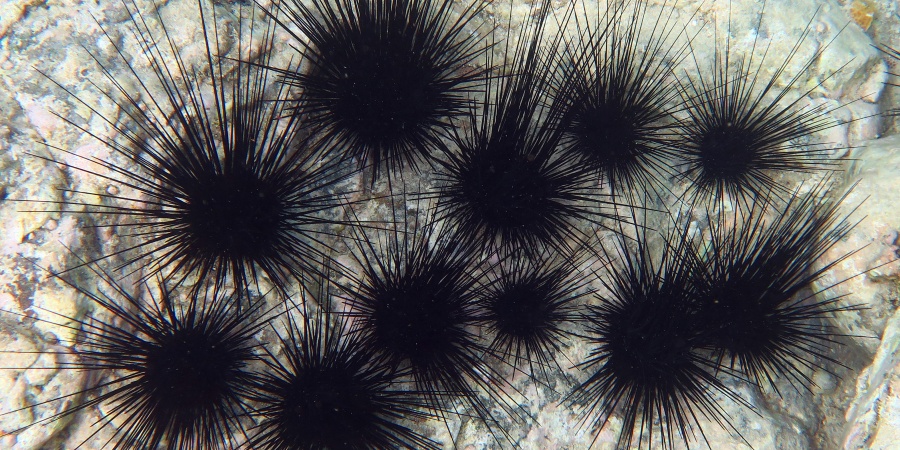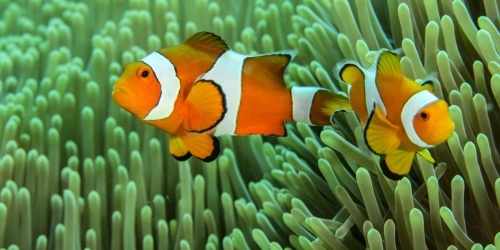
What is a sea urchin? Heart urchins and cake urchins are just some of the many species of sea urchins. These unusual animals provide an endless source of fascination. They are closely related to sea stars, sharing the same five-fold symmetry, and they too move about on hundreds of hydraulically operated tube feet. Sea stars and sea urchins are from a group known as echinoderms, a word meaning ‘spiny skins’. Sea urchin eggs have properties that make them important for medical research. Compounds extracted from marine organisms are initially tested to see whether they inhibit the production of rapidly dividing sea urchin eggs. If so, they may have potential to provide cures for AIDS, cancer and other diseases.
What do they look like? Regular urchins are spherical animals with a case or shell of close-fitting limy plates. Sea urchins have spines that protect them from predators. However, it is mostly the hard outer shell, from which the spines have usually broken off, that is found washed up on beaches.
Where do they live? Sea urchins are found in all of Western Australia's marine parks. They are most common in intertidal habitats and on shallow reefs, but have been found as deep as 7000 metres.
What they eat and how: They feed on kelp and other kinds of seaweeds. Due to their ability to reproduce rapidly when conditions become favourable, they can reach plague proportions, only to die in huge numbers when they eat out their food source.
Threats: In some parts of the world, sea urchins are believed to be powerful aphrodisiacs. The roe is a prized delicacy in Japan, in islands of the Pacific and in European countries such as France, Italy and Greece.
Behaviour: They use the spines on the underside to move around, making them look like they are walking on stilts. Some tropical species, such as the flower urchin, have venom-tipped spines that can cause severe pain to careless divers.
Conservation status: Sea urchins are very common all around the Western Australian coast.



























